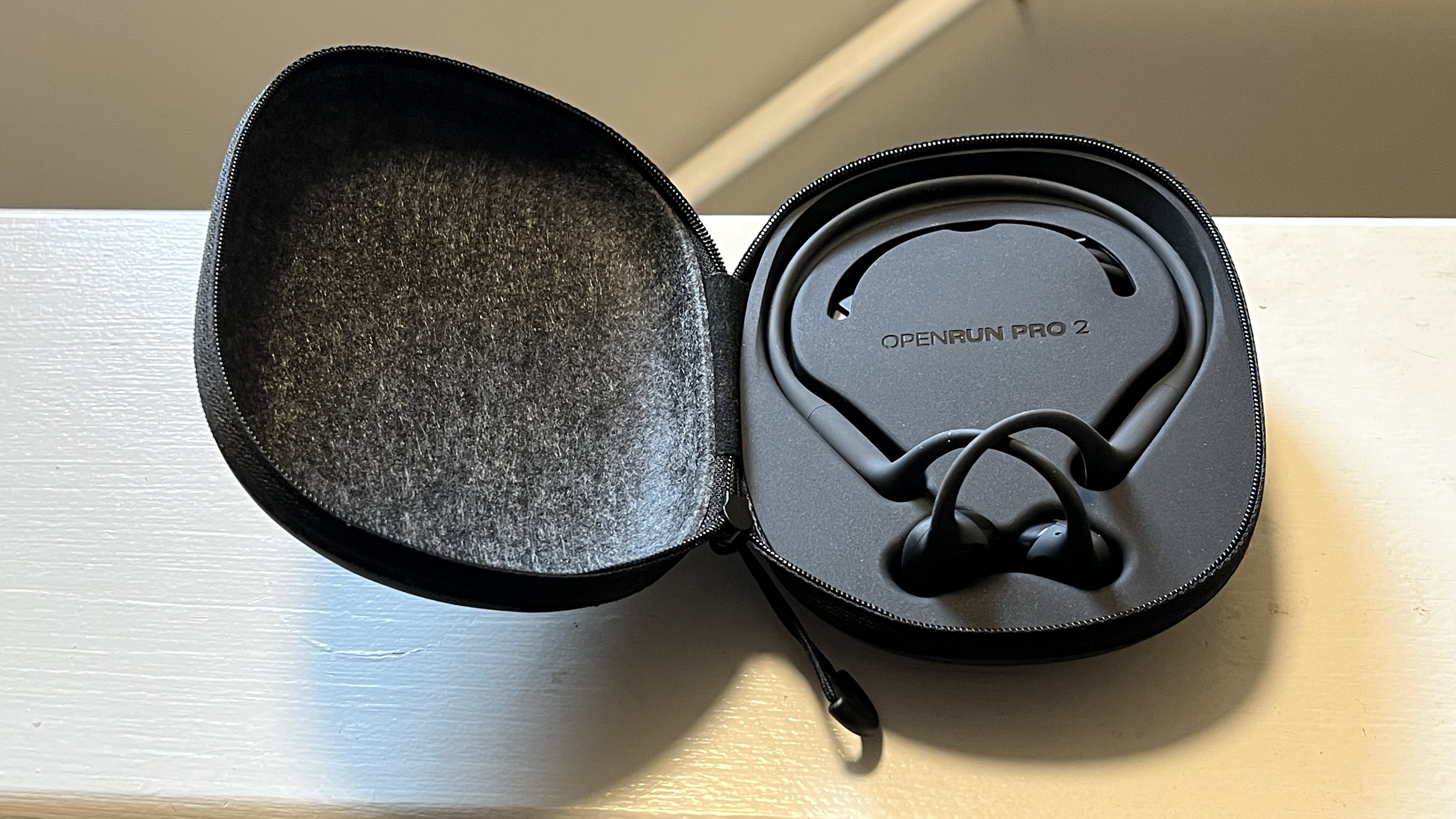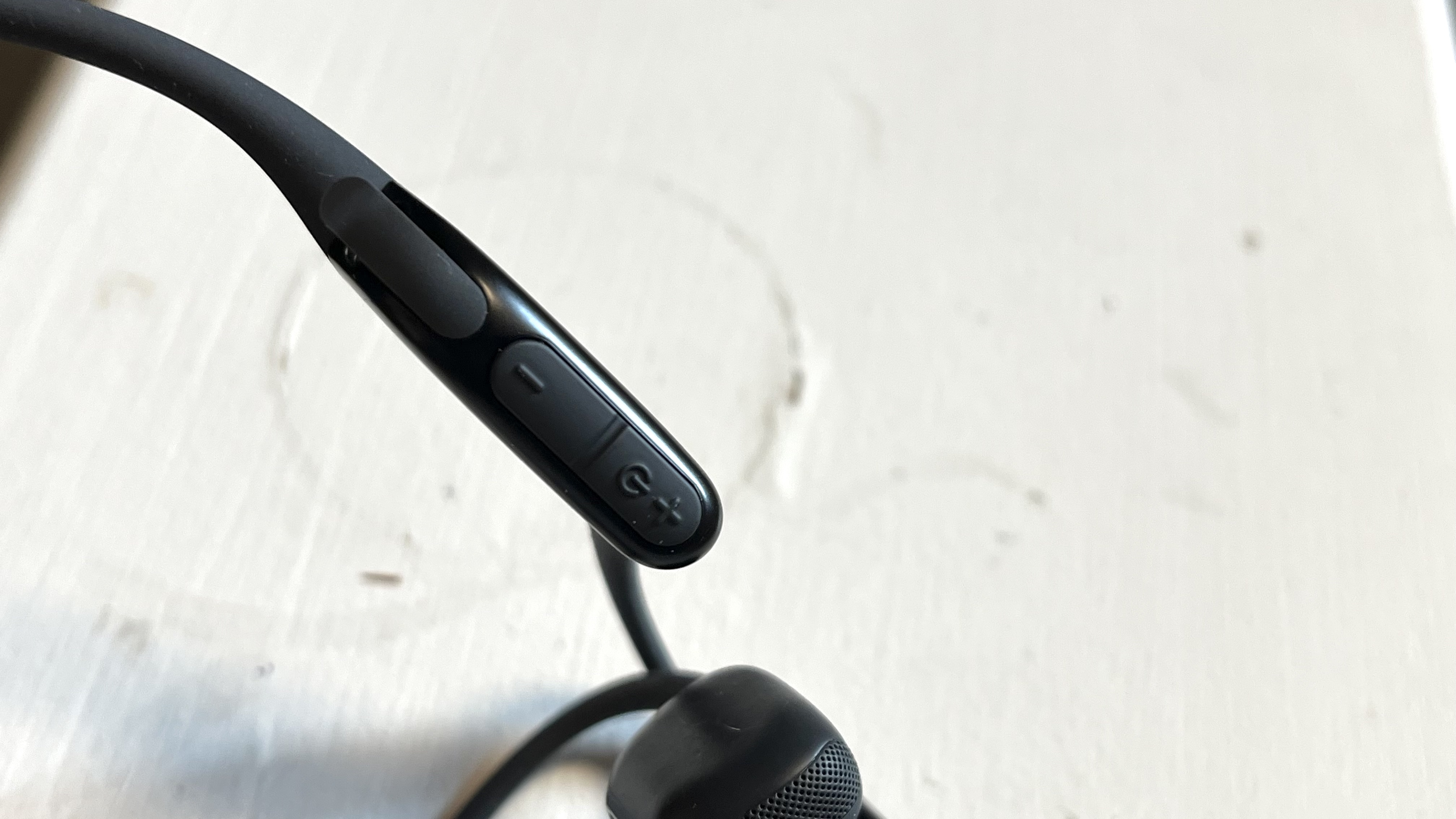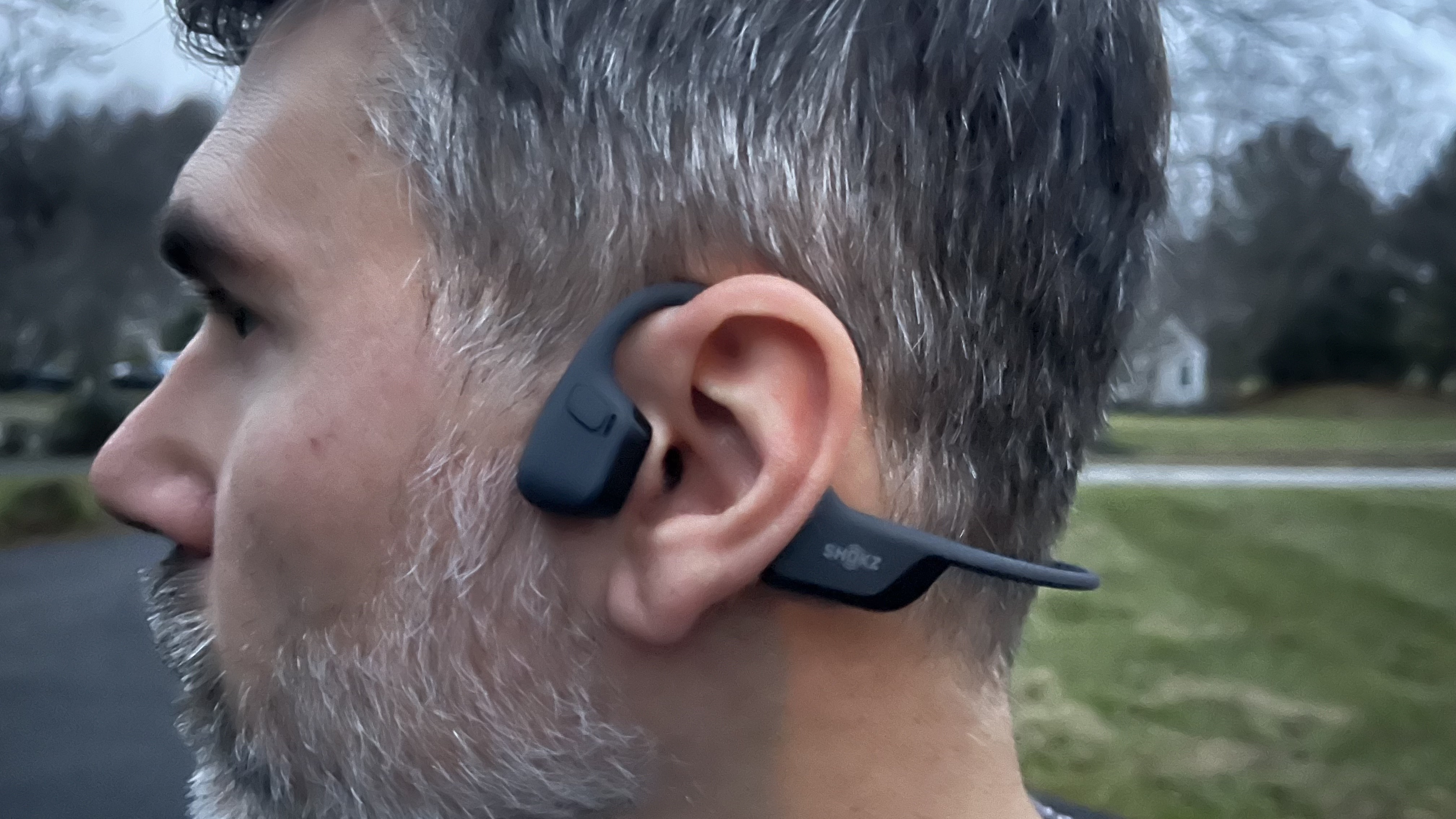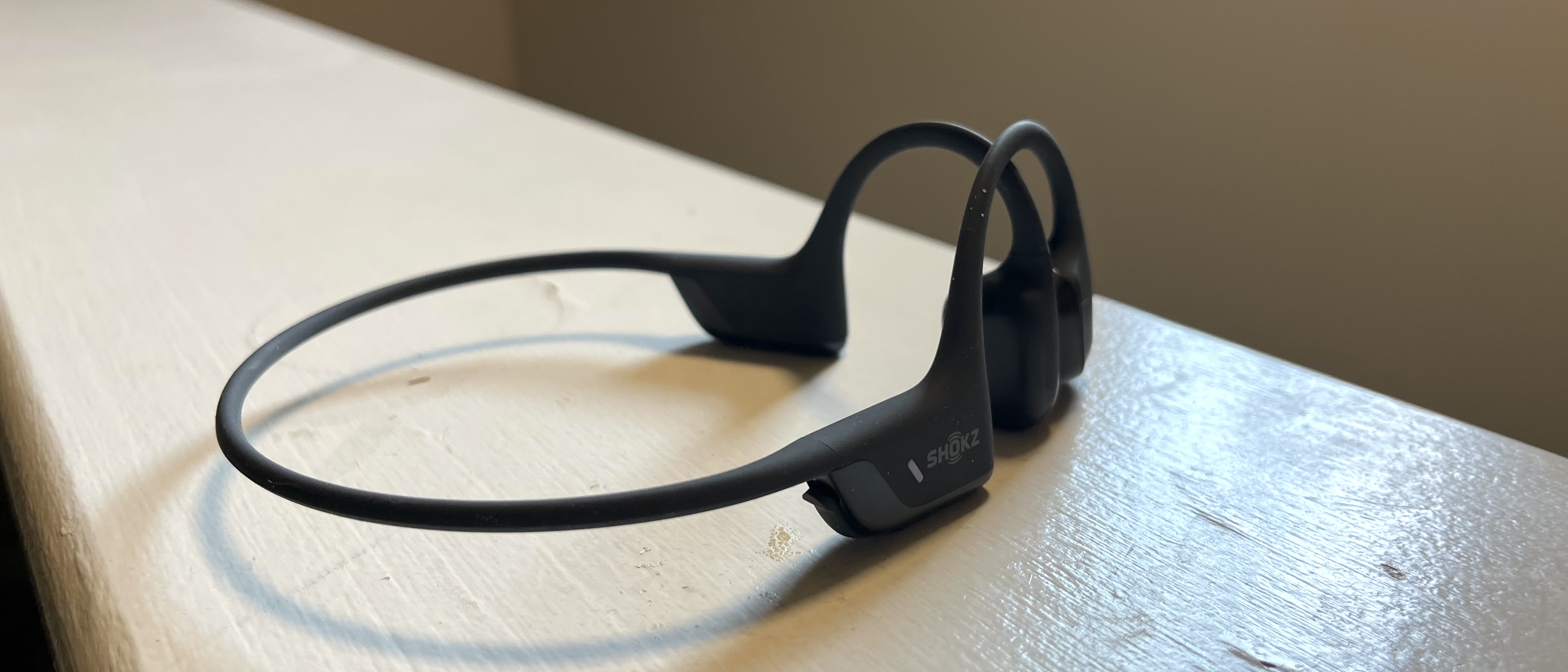TechRadar Verdict
The high price tag on the Shokz OpenRun Pro 2 is worth it, since they offer a comfortable and lightweight fit, good audio – especially for the form factor – and long battery life. The button layout takes a bit of getting used to, but it’s a very minor nitpick.
Pros
- +
Great sound quality for bone conduction headphones
- +
Very light, comfortable, and stable
- +
Good battery life with fast charging
Cons
- -
On the expensive side
- -
Slightly strange controls layout
Why you can trust TechRadar
Shokz OpenRun Pro 2: Two-minute review
The Shokz OpenRun Pro 2 are particularly excellent for runners, especially long-distance and trail runners. While it won’t quite last the full length of time needed for an Ultra marathon (what can?), they are among the best running headphones out there.
Like the best open earbuds, they allow you to hear your surroundings in a way that even the best wireless earbuds with good ambient / transparency modes can’t. They also are extremely lightweight, stable, and have a nice long battery life. Shokz has also added in air conduction tech to improve the sound quality, as bone conduction headphones typically lag in this area compared to more traditional options.
It’s no surprise, considering how bone conduction headphones work. At louder volumes, these types of headphones tend to create a vibrating sensation that can be unpleasant, even nauseating depending on one’s sensitivity. The Shokz OpenRun Pro 2 doesn’t create this sensation for the most part, with one exception that I’ll mention later.

Before we get to that, we should take a look at the Shokz OpenRun Pro 2’s design. They fit the general mold of bone conduction headphones; there’s the portion containing the drivers that sit in front of the ear connected to the electronics via an over-the-ear loop. Both sides are connected by a wrap-around headband, while the whole thing is covered in silicon to provide some waterproofing. In this case, it’s IP55, surprisingly worse than the lower-tier Shokz OpenRun with their IP67 rating.
Where these headphones differ a little from the competition is the fact that, besides providing four colorways (black, silver, orange, and a Kipchoge-signature white and orange silver-and-orange), you can choose between ‘standard’ and ‘mini’ size headbands, whereas most bone conduction headphones come with a one-size-fits-all one.
This is a nice inclusion. In fact, I might have benefited from the smaller headband, as I could feel the headband move a little if I shook my head. Still, the fit was stable and neither the drivers or section that goes over or behind the ears moved at all. On top of that, it’s very lightweight at just around 30 grams, so you’ll barely feel them – unlike many in-ear buds that start to hurt after being stuck in the ear canals for a while.

As far as controls go, I was a bit confused at first since two of them, used for power, pairing, and volume controls, sit under the right side behind the ear, while a third button sits on the driver section on the left side used for changing songs. It’s not a big deal (other than highlighting my mistake of not reading the manual right away), but I’m used to having all the controls on one side. Thankfully, they’re fairly responsive to the touch.
There’s one USB-C port on the Shokz OpenRun Pro 2, which might be why the IP rating is a little lower than expected here, even if it does have a silicon covering. On the brightside, using this port allows for faster charging compared to the old magnetic one, as five minutes plugged in will produce two and a half hours of battery life. Of course, it will take a full hour to charge up to 100% or twelve hours of use.
It’s also worth mentioning that the only form of connectivity here is its speedy Bluetooth 5.3. There’s no onboard storage or MP3 player: if that’s a consideration for you, you’ll want to check out our best waterproof headphones guide, many of which come with MP3 storage.




The feature set on the Shokz OpenRun Pro 2 are a bit limited compared to wireless earbuds. Since these headphones are an open-ear design, there’s no active (or passive) noise cancellation. Any kind of fine-tuning involves mainly playing around with the equalization (EQ), which is available in the app, though you can press and hold the volume up and down buttons simultaneously during play to cycle through the various EQ options.
As far as the different EQ options go, there are six modes already on hand, along with a five-band EQ for a more personalized touch, which you can save as a new EQ mode. Of the ones already available, there’s a standard, vocal, bass boost, treble boost, classic, and volume boost.
The classic mode turns off the air conduction for a purer bone conduction experience, which also reintroduces that vibrating sensation when the volume is too high, something that I (and many) find uncomfortable. Luckily, it’s the only setting where I really experienced that phenomenon.
Multipoint connectivity is also available, though you have to turn it on in the app. While not a dealbreaker, be aware of the fact that there’s no on-ear detection, so music will continue to play when you take the Shokz OpenRun Pro 2 off.

The improvements in the newest generation of bone conduction headphones have been really heartening, namely that the audio quality is better than before and that I don’t experience those disconcerting vibrations at higher volumes (see my review of the H2O Audio Tri 2 Pro Multi-Sport for a similarly improved audio experience).
The audio quality has improved for two reasons. The first is the fact that the OpenRun Pro 2 uses the company’s 10th generation bone conduction technology. The second, and arguably more important, is that these headphones also use air conduction. In essence, these are hybrid headphones as opposed to just bone conduction headphones.
After having listened to all sorts of genres from Indie and Metal to Hip Hop and Folk, I can say that they’re allare enjoyable to listen to. The high-end is fairly present with plenty of clarity, though everything does feel just a tiny bit muted as if the headphones’ natural frequency range rolls off a bit with higher frequencies. The mids are full, almost a little too much, so that any audio I listen to has plenty of body. The bass is a bit pulled back, so bottom-heavy music won’t hit as hard.
Because the highs and lows are not as prominent as the mids, there is a very slight boxy quality to music. They sound very good for the form factor, but aren’t going to replace anyone’s earbuds as go-to listening devices outside of a run or the gym.
Since these are open earbuds, there is some leakage. However, it’s not all that noticeable unless you’re using them in a quiet setting. If you use them on the trail, other presumably headphone-less runners might catch a little bit of what you’re listening to, but only if they’re very close to you.
Lastly, the Shokz OpenRun Pro 2 can used to take and make calls. The call quality is pretty good with plenty of clarity, though the speaker’s voice will sound a little far away compared to speaking on a phone regularly.
Shokz OpenRun Pro 2: Specifications
| Drivers | Not specified |
| Active noise cancellation | No |
| Battery life | Up to 12 hours |
| Weight | 30.3 ±0.5g |
| Connectivity | Bluetooth 5.3 |
| Frequency range | 20Hz - 20kHz |
| Waterproofing | IP55 |
| Other features | Multipoint connectivity |
Shokz OpenRun Pro 2: Price and availability
- How much does it cost? $179.95 / £169.00 / AU$319.00
- When is it available? Available now
- Where can you get it? Available in the US, UK, and Australia
You can spend quite a bit less than the Shokz OpenRun Pro 2’s asking price of $179.95 / £169.00 / AU$319.00 for a pair of bone conduction headphones. Shokz’ own more entry-priced OpenRun go for $129.95 / £129.95 / AU$219.00, for instance. And, of course, there are plenty of much cheaper, lesser-known options littering Amazon.
And there aren’t many options out there that go for more, either. Some of the ones that do are a bit more specialized, such as the watersports-friendly H2O Audio Tri 2 Pro Multi-Sport, which go for $199.99 / £155.68 (about AU$310) and include 8GB of storage, an MP3 player, and a special feature to record playlists onto it, so you don’t need your phone.
Still, the Shokz OpenRun Pro 2 are worth the price in my mind for the simple reason that they mix in air conduction tech with bone conduction for a better audio experience as well as to minimize the vibrating sensation that typically accompanies the use of bone conduction headphones.
As a value proposition, the Shokz OpenRun Pro 2 may not be an outstanding deal, but they’re worth the price.
- Value score: 4 / 5
Shokz OpenRun Pro 2: Scorecard
| Attributes | Notes | Rating |
| Value | They’re on the pricey side, but what the Shokz OpenRun Pro 2 have to offer is worth it. | 4 / 5 |
| Design | Stable and lightweight, there’s little to fault here, though I wish all the buttons were on one side. | 4.5 / 5 |
| Performance | Though slightly boxy sounding, the audio quality is very good for bone conduction headphones. | 4.5 / 5 |
| Average rating | Great, especially if you’re looking for something that can get you through long runs. | 4.5 / 5 |
Should I buy the Shokz OpenRun Pro 2?
Buy it if...
You care about audio quality
Getting good sound out of a bone conduction headset is not easy, yet Shokz has managed to do just that thanks to the inclusion of air conduction.
You’re a runner
The fit is stable and lightweight and the battery life is more than enough for anyone except Ultra marathon runners. It also has an IP55 rating to handle the elements.
Don't buy it if...
You want to take it in the water
Not all bone conduction headphones are good for swimming, such as this one. Shokz does have swimming-specific models to check out if you want something that’s more fully waterproof.
You’re limited on funds
These headphones are on the pricy side for bone conduction headphones. If you’re on a budget, you’re better off considering the slightly inferior non-Pro version.
Also consider
Shokz OpenRun
The Shokz OpenRun are fantastic for running, and are only slightly behind the OpenRun Pro 2 due to the fact that they employ a slightly older generation driver and don’t include air conduction so you’re still getting some vibration at higher volumes. Still, they sound good, are lightweight, and cost quite a bit less than their more expensive big brother.
Read our full Shokz OpenRun review
H2O Audio Tri 2 Pro Multi-Sport
The H2O Audio Tri 2 Pro Multi-Sport is not cheap, but it’s worth it, especially for anyone also looking for headphones to use during swimming. After all, these are tailored to triathletes. They have a strong battery life, complete waterproofing, and onboard storage as well as a special Playlist+ feature that untethers you from your phone during a run or swim.
Read our full H2O Audio Tri 2 Pro Multi-Sport review
How I tested
- Tested over a couple weeks
- Listened to different kinds of media
- Tested all the different features
I spent a couple weeks using the Shokz OpenRun Pro 2 as my workout headphones. While using them, I listened to all sorts of genres from electronic and hip-hop to rock and acoustic music to get an idea of how they sound. I also tested the various features, most notably the EQ settings.
After testing, it’s clear that these are, per their namesake, flagship headphones for runners. They’re ideal because of the open-ear design from the bone and air conduction, they’re very lightweight, and have good battery life. Plus, they sound pretty good. Check out our guide to how bone conduction headphones work for more details on how headphones like these operate.
I’ve spent the last few years reviewing audio equipment and have spent even longer using my critical ear as a listener and musician to understand what does and doesn’t sound good.
- First reviewed December 2024

James Holland loves checking out gadgets of all sorts, whether it's audio equipment, laptops, or vacuums (especially of the robot variety), and does so for a number of Future Publications including TechRadar, Top Ten Reviews, Homes & Gardens, and T3. He's built up an expertise for in-depth reviewing over the last four years. When he's not putting in the work on the latest tech, he loves to travel, play music, and eat questionable food.
